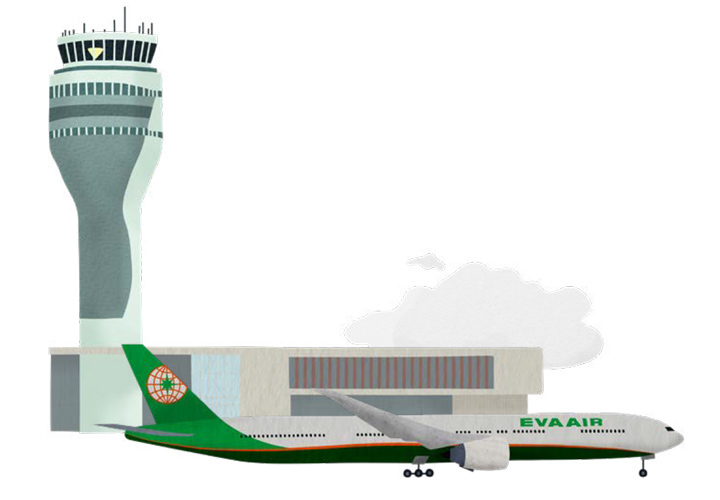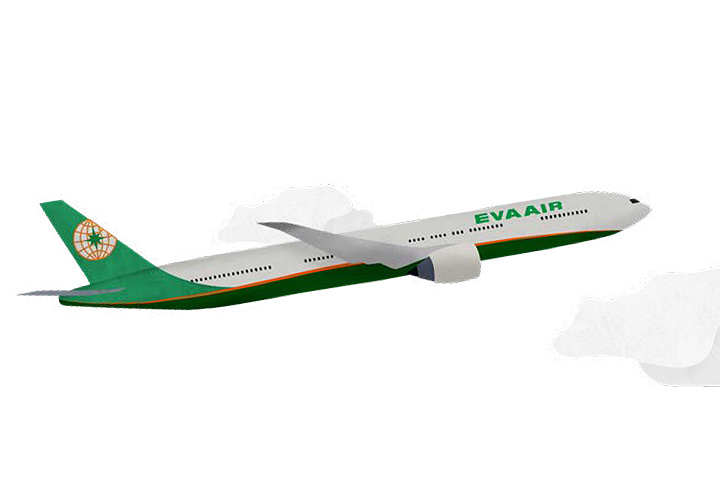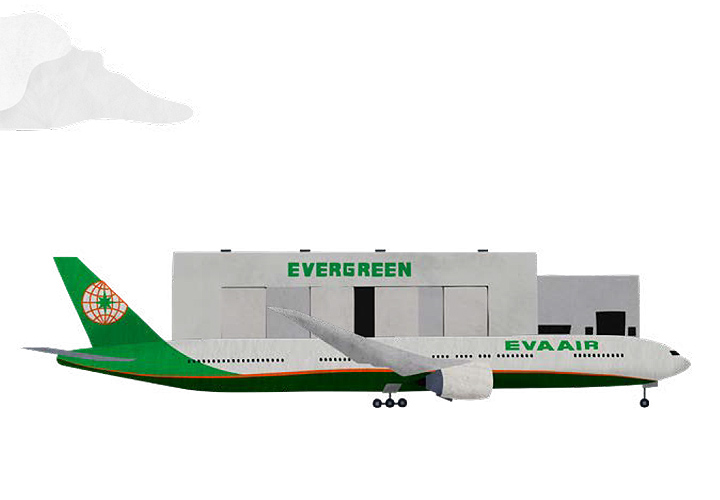Safety Guidelines: Hazard identification and risk management as the action orientation, and S.O.P. compliance and operation accuracy as performance goals, as well as professional and systematic enhancement as the main axis of sustainability.
The core values of “Safety, Service, and Sustainability” are paramount at EVA Air; they are the primary goals pursued by all employees. Guided by our “Action Oriented, Performance Targeted, Sustainability Focused” sustainable action plan, all EVA Air flight and ground crew uphold a commitment to “taking proactive steps based on hazard identification and risk management; aiming for S.O.P. compliance and operational precision as performance goals; and using expert, systematic refinement as the foundation for sustainability”. We continuously improve personnel training, streamline processes, and ensure strict adherence to S.O.P.s through data-driven, evidence-based, and systematic approaches. By integrating big data and artificial intelligence, we are actively incorporating the forward-looking approach of Safety-II while emphasizing learning through success in daily operations. This enhances system flexibility and adaptability, thereby further improving the Safety Management System’s effectiveness and resilience.
EVA Air’s safety vision is, “We aim to assure your safety whenever you are airborne; we never compromise safety in the air or on the ground.”, and we instill the safety goal of Zero Accidents into every employee’s mindset and action. Through the collective efforts of all employees, EVA Air strives to provide passengers with a safe and comfortable journey through excellent flight safety and service. To strengthen employees’ sense of responsibility for passenger safety, EVA Air launched the Safety Guardian Initiatives Program II in 2024. These programs encourage all flight and ground crewmembers to earnestly prioritize safety in their actions and rigorously follow the S.O.P.s in their duties. It also aims to inspire a cultural embodied by the motto “Safety starts from heart, ensuring passenger's safety always comes first.” This is central to cultivating EVA Air’s exemplary safety culture.
Flight Safety Policy
We have adopted the
"EVA Air Safety Policy" approved by the C.E.O as a testament to our commitment and determination in promoting a safety management system, making safety an integral part of our organizational culture. We integrate the SMS’s core element - “hazard identification and risk management” into the mindset and daily operations of our employees, utilizing them in strategic planning, procedure formulation, and operational implementation. Through the establishment of the Company’s comprehensive safety management organization, each department can identify the hazards present in operational environment and systematically managing both existing and potential risks in a proactive manner.
Implementation of Risk Management Actions
EVA Air employs risk management methodologies and comprehensive safety education and training to foster safety awareness, situational awareness, and adherence to standards among all flight and ground crews. With a Proactive and Forward-Thinking Approach, the Company aims to identify and mitigate operating and system hazards promptly and effectively. In the practical application of our Safety Management System (SMS), EVA Air promotes our Seven Processes Campaign, a systematic approach that guides all employees in implementing SMS. This framework outlines the interconnections between seven stages: regulations, policies, procedures, documentation, standards, actions, and results, ensuring that all operations align with the organization’s established goals. In 2024, EVA Air respectively held 8-hour courses for the Safety Management System Basic Training and Safety Management System Leader Training, with 99 and 86 trainees respectively, achieving a 100% completion rate.
Hazard Identification and Risk Management
In 2024, the "SMS Action Teams" identified 8 categories of risk management follow-up items and developed 48 mitigation actions, including procedure revisions, enhanced personnel training, and case studies, all of which have been fully implemented, achieving a 100% completion rate. In response to geopolitical risks, EVA Air continuously assesses the evolving threats and swiftly develops contingency plans to minimize the associated impact and loss. Through emergency response drills, we devise contingency measures such as alternate route and fuel planning, etc., as part of our response actions.
Flight Safety Index
Based on the guidance provided by the civil aviation regulatory authority and the 2023-2025 Global Aviation Safety Plan (GASP) issued by the International Civil Aviation Organization (ICAO), five High-risk Categories of Occurrence (HRCs) have been identified globally, including Controlled flight into terrain (CFIT), Loss of control in-flight (LOC-I), Runway excursion (RE), Runway incursion (RI) and Mid-air collision (MAC). In response to these five high-risk categories, EVA Air has developed relevant hazard identification and risk management measures. These measures are followed up on annually, using the Safety Performance Indicators (SPI) and Safety Performance Targets (SPT) to evaluate specific performance and trends in EVA Air’s safety performance. Both SPI and SPT are prioritized as key review criteria for quarterly assessments by the Safety Promotion Committee and the SMS Action Team.
Safety Performance: EVA Air has had no serious incident in the past 4 years.
Global recognition

The IATA Operational Safety Audit (IOSA) is a safety audit standard for airlines, which is an internationally recognized airline safety inspection mechanisms used to assess whether an airline’s operations meet the safety standards of the International Civil Aviation Organization (ICAO). The certification and audit are conducted by the auditing accreditation organizations authorized by the IATA every two years. EVA Air is the first certified airline in Taiwan, consistently passing recertification assessments since 2005. These certifications not only ensure that every operating system meets international safety standards but also recognize the airline's commitment in aviation safety. From December 2 to 5, 2024, EVA Air was validated through a new approach called the Risk-Based IOSA Audit. The audit was successfully completed with outstanding results in the industry, reaffirming our commitment to maintaining high safety standards. EVA Air’s outstanding safety record of no major accidents and no hull loss in the entire history of the Company, has earned us repeated praise from passengers around the world.

Safety Promotion Activities
EVA Air has held annual Safety Week activities since 1996. It is hoped that through the promotion of different activities such as education competitions, safety/life lectures, Safety Symposium and Safety Workshop, the mindset of safety will be deeply rooted in the mind of every employee. The theme of the 2024 Safety Week is “Protecting Safety Starts with the Heart; Passenger Safety, Doing My Part”, emphasizing that each employee is a guardian of passenger safety. Whether they’re in-flight, providing cabin service, conducting maintenance, managing flight dispatch, overseeing airport operations, or performing administrative tasks, every employee gains a deep commitment to flight safety and implements standard operating procedures (SOP) in their work to prevent errors. The eight SMS Action Teams also created a safety video themed on Human Error Minimization for Flight Safety Enhancement. This helps all employees stay vigilant at work and reduce the occurrence of errors. The safety video has been uploaded to the Employee Training Management System (ETMS) for access anytime, and has so far been viewed more than 7,000 times.
Safety Guardian Initiatives (SGI) Program II - Safety and Diligence Guards the Flight. Let Us Be Your Guardians Up High
In 2024, we continued to implement the Safety Guardian Initiatives Program II. Through a variety of activities, the program reinforced the spirit of being guardians of safety among employees. The “4Rs” safety concept promoted enhancing situational awareness and reducing human error. These efforts aim to make all employees guardians of safety who can work together to ensure EVA Air’s overall safety goals are achieved.
Remind
When an employee is concerned about something in daily operations or critical processes, they should alert other team members, because increased vigilance can prevent operational errors.
Report
Employees who need to submit any operational concerns to a responsible department can use the department’s own reporting mechanism or the Company’s safety reporting system. This ensures the responsible department gets timely notification, so they can review and take care of any issues.
Reinforce
When the responsible department is notified of a safety issue, frontline supervisors or managers are required to take immediate action. Cross-departmental discussion and coordination must be conducted whenever necessary, so that teamwork can minimize safety risks and ensure smooth operations.
Refine
Guidance from top executives and investment from all employees; using reminders, reporting, and team collaboration to help EVA Air build a system that is effective and continuously refined.
In 2024, all activities were successfully completed with outstanding results, thanks to the enthusiastic participation of all employees.
| Programs |
Outcome |
| Safety Culture Survey and In-depth Interviews |
● Safety Culture Survey: A total of 1,775 responses.
|
●
Safety Culture Interviews: A total of 50 participants.
|
| Situational Awareness Enhancement for Human Error Minimization instructional videos |
In 2024, 7 instructional videos were produced to improve situational awareness among managers and employees, and thus minimize human error. |
| Aviation Safety Culture Case Study Workshop |
Hosted by a specialized professor, the workshop drew on renowned safety culture cases in the aviation industry. Member of the eight action teams used their unique perspectives to explore the duties of department heads in promoting organizational culture. Through reflection and discussion, participants examined how the Company’s current safety culture practices can be further improved and refined.
● Safety Leadership Training: 40 SMS Action Team supervisors and senior Company executives participated.
|
| Selection of Safety Ambassadors |
4 Safety Ambassadors for maintenance safety, cargo safety and ground handling safety were selected, in recognition of their outstanding performance at work. The Safety Ambassadors were sent to relevant conferences, where they shared their work experiences to facilitate transfers of knowledge and encourage learning by example. |
| Deficiency finding on S.O.P. |
●
Organized “Eagle Eye” and “Golden Brain” innovation contests, with 235 safety manuals covered in the SOP documents.
◆ Eagle-Eye: Finding typos and things subject to misunderstanding
◆ Golden Brain: Identifying challenges to implementing SOPs
|
●
There were 474 proposals for “Eagle Eye” and 37 proposals for “Golden Brain”, for a total of 511 proposals.
|
| Safety 100 |
Distributed Safety 100 vouchers to encourage employees to proactively report potential risks, improve personal safety awareness, and jointly ensure that safety measures are carried out. In 2024, a total of 220 employees were awarded as outstanding. |
| Began publishing Safety Mileage |
In October 2024, EVA Air began publishing the Safety Mileage e-newsletter. In it, we share safety highlights, reflect on case studies, exchange information, and more. The publication is aimed at building a positive safety culture of mutual trust, support, and harm avoidance. |
Control Flight Risks and Operational Quality
Before the Flight:Flight Operations Risk Assessment
EVA Air utilizes the Flight Operations Risk Assessment System (FORAS) as a decision support tool for flight operations. The flight crews can access flight operations risk analysis information through their iPads 2.5 hours prior to departure, and the system will provide "Safety Reminders" for them to aid in their decision-making process.
During the Flight:Real Time Aircraft Condition Monitoring
The ERM (En-Route Risk Monitoring) module of FORAS utilizes the Aircraft Condition Monitoring System (ACMS) and Aircraft Communications Addressing and Reporting System (ACARS), among other monitoring and communication systems, to provide real-time monitoring of in-flight risks such as Turbulence Encountering, TCAS-RA, System Malfunction, and Engine Malfunction. It enables the immediate tracking of aircraft dynamics, serving as a risk alert and control mechanism.
After the Flight:Comprehensive Flight Data Analysis
EVA Air has established the Flight Data Analysis System since 1992 to perform comprehensive flight data analysis for controlling the quality of flight operations. In addition, it has established the Flight Operation Performance Assessment System (FOPAS). Applying linear functions and safety margin methodology, the FOPAS uses 56 criteria to access and quantify the operational performance of each flight.
Daily Safety Monitoring System (DSMS) for flight safety risks monitoring
In response to the surge in global travel demand, EVA Air developed the Daily Safety Monitoring System (DSMS) to ensure the safe operation of aircraft. The DSMS incorporates three mechanisms, namely "Alert in advance", "Assessment" and "Feedback", to enhance the monitoring of flight safety risks and the improvement of flight quality.
Utilizing the existing FORAS system to monitor risk factors
After the mission is completed, the FORAS system will assess whether there are areas in need of improvement in terms of flight performance
Utilizing the existing FDIS system to provide flight data analysis to pilots as a reference for their technical improvement
Artificial Intelligence and Big Data Application
EVA Air has collaborated with Tamkang University, and National Taiwan University through industry-academic partnerships to apply artificial intelligence to flight data analysis. We continue to leverage flight data to train machine learning systems. The models analyze flight trajectories to provide flight operation suggestions. The system also analyzes historical flight crew data, to identify personal operating habits and operational preferences that could affect flight performance. We also developed a visual interface to provide flight crew with access to the research outcomes. The results will serve as a reference for future flight operation improvements and help enhance flight operation quality.





